Understanding the names and functions of essential film gear is crucial to working efficiently on set. In this post, I’ll strive to cover key pieces of film gear, organized by department. Keep in mind that terminology can vary depending on the crew and location. Though not exhaustive, this list aims to provide a strong foundation, helping new PAs steer clear of the “deer in headlights” look.
Camera
- Camera Body – The primary device that captures the footage (e.g., ARRI Alexa, RED Komodo, Sony Venice).
- Lenses – Various focal lengths, including prime and zoom lenses.
- Matte Box – A camera accessory that blocks unwanted light and holds filters.
- Follow Focus – A mechanism for smooth focus pulling.
- Tripod & Fluid Head – A stable camera support system allowing smooth movements.
- Steadicam – A stabilizer worn by an operator for fluid motion shots.
- Gimbal – An electronic stabilizer for handheld shots.
- Camera Crane (Jib) – A long arm that moves the camera in smooth arcs.
- Handheld Rig – A shoulder mount or rig for mobile, handheld shooting.
- DIT Station – A setup for on-set data wrangling, color correction, and footage backup.
- Video Village – A designated area on set where the director, producers, and key crew members watch live camera feeds on monitors to evaluate shots in real time.
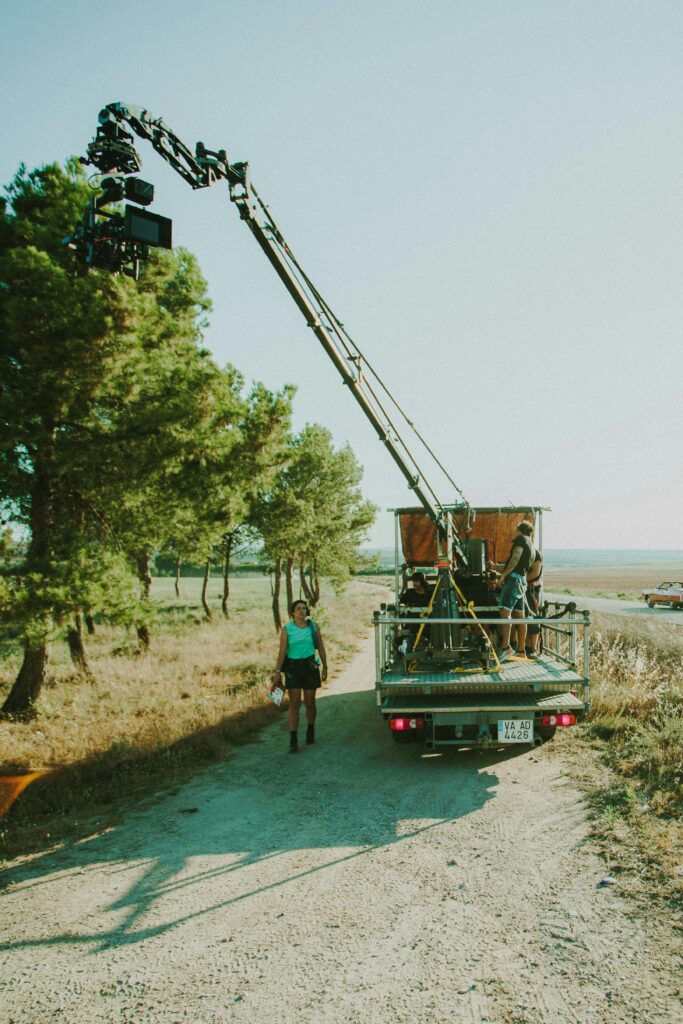
Photo by Oleg Brovchenko on Unsplash
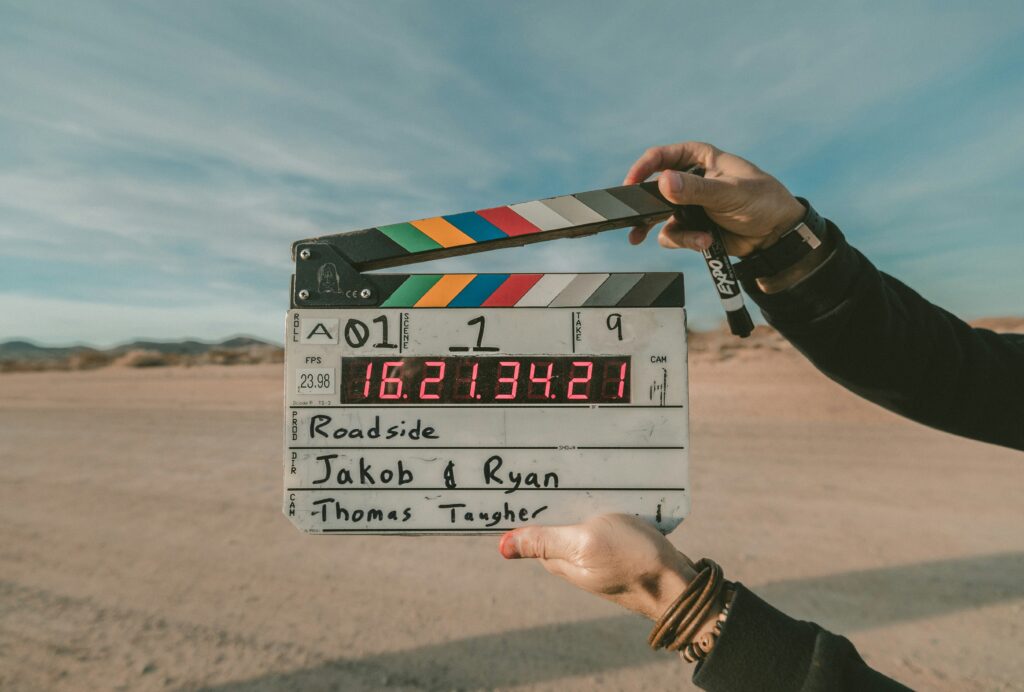
Photo by Jakob Owens on Unsplash

Photo by Hunter Moranville on Unsplash
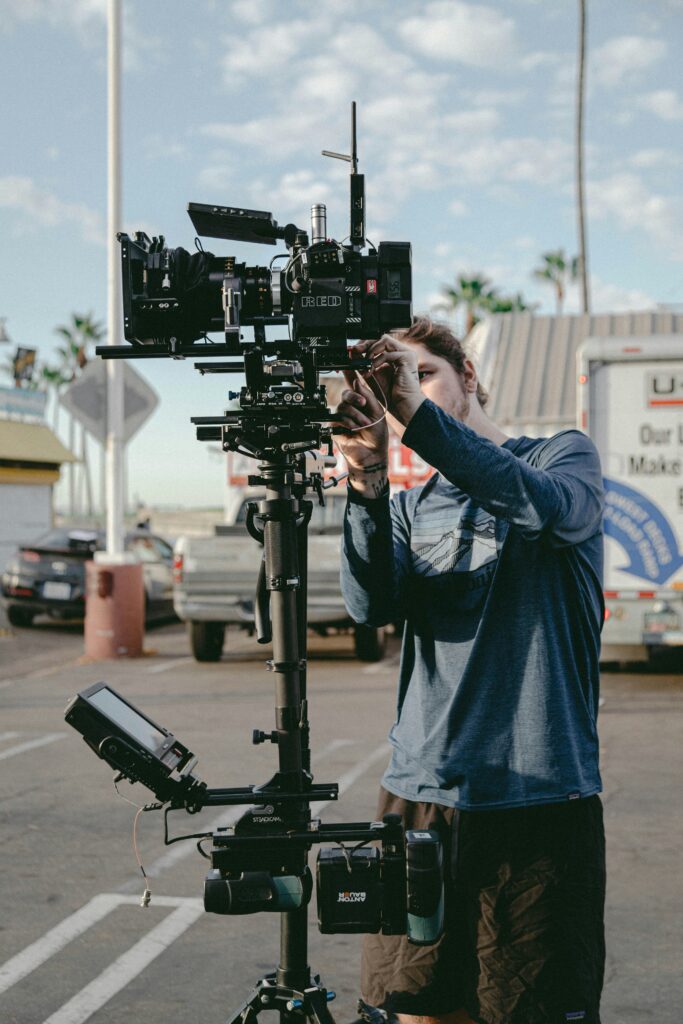
Photo by Jakob Owens on Unsplash
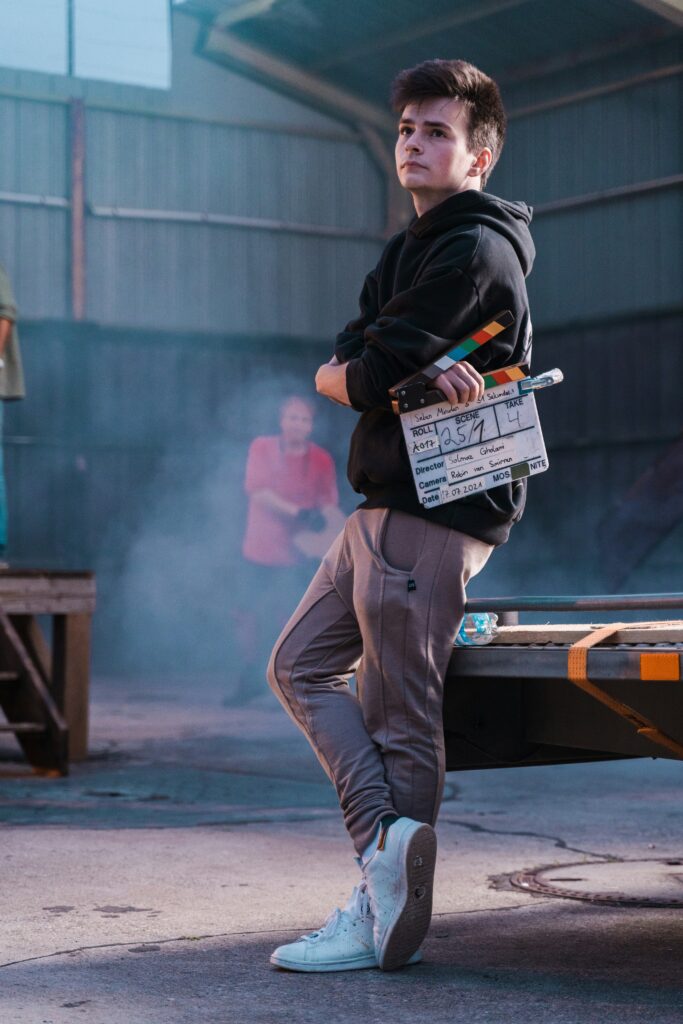
Photo by Johannes Blenke on Unsplash
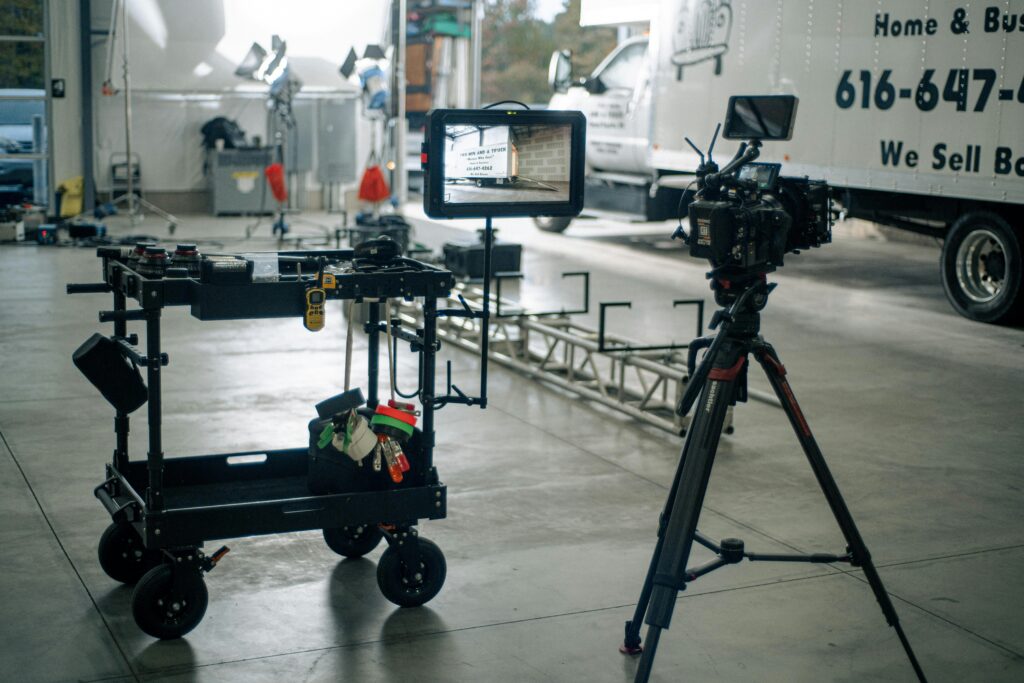
Photo by Troy Spoelma on Unsplash
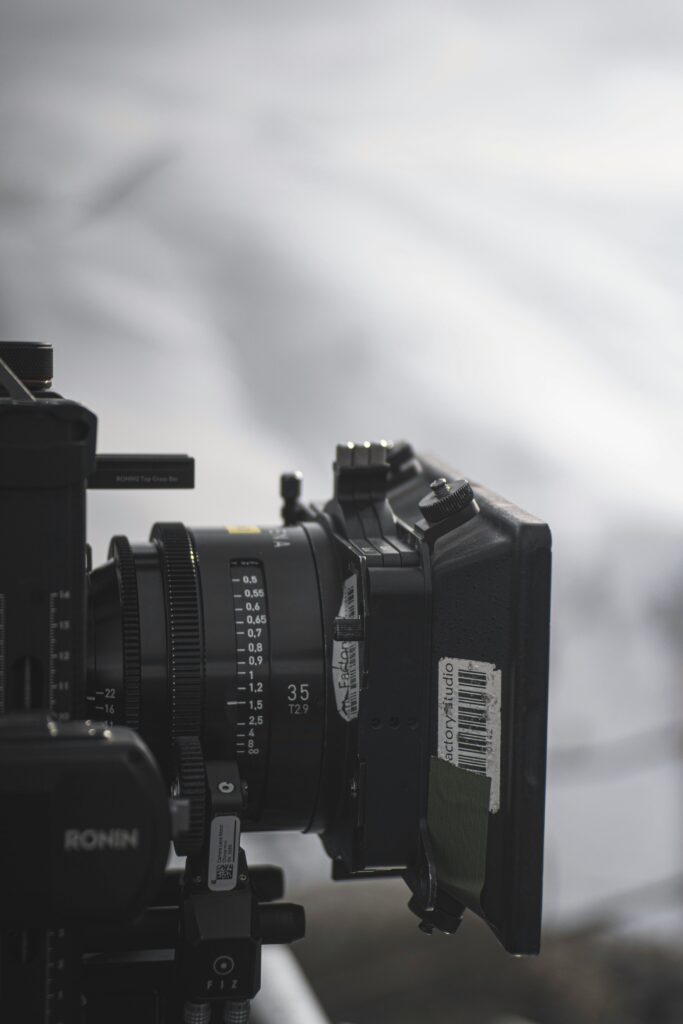
Photo by Vadim Morozov on Unsplash
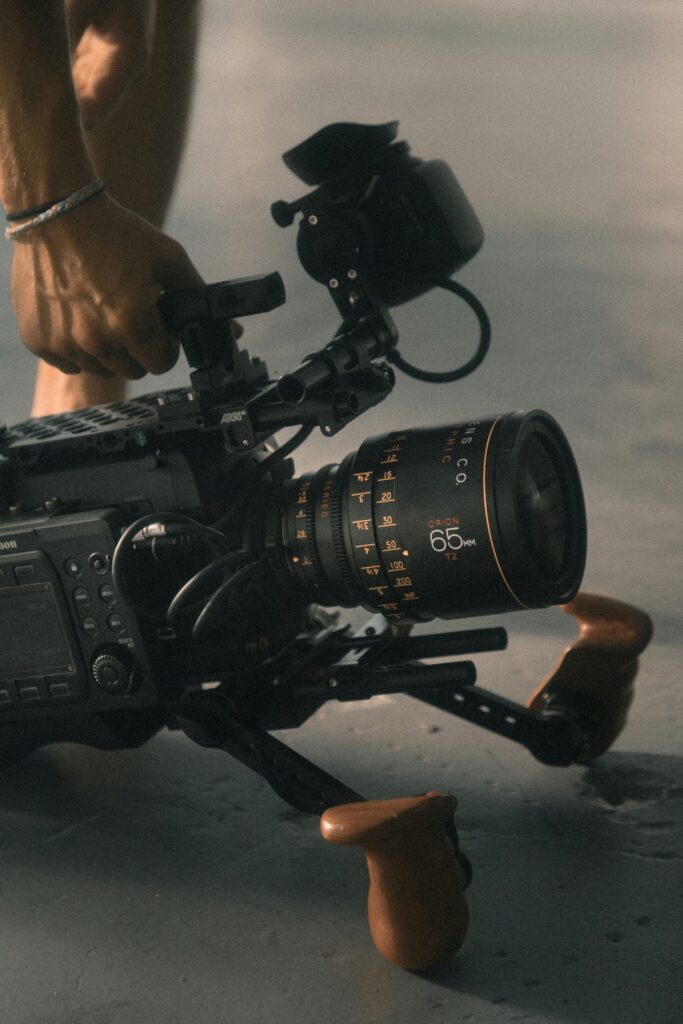
Photo by Jakob Owens on Unsplash
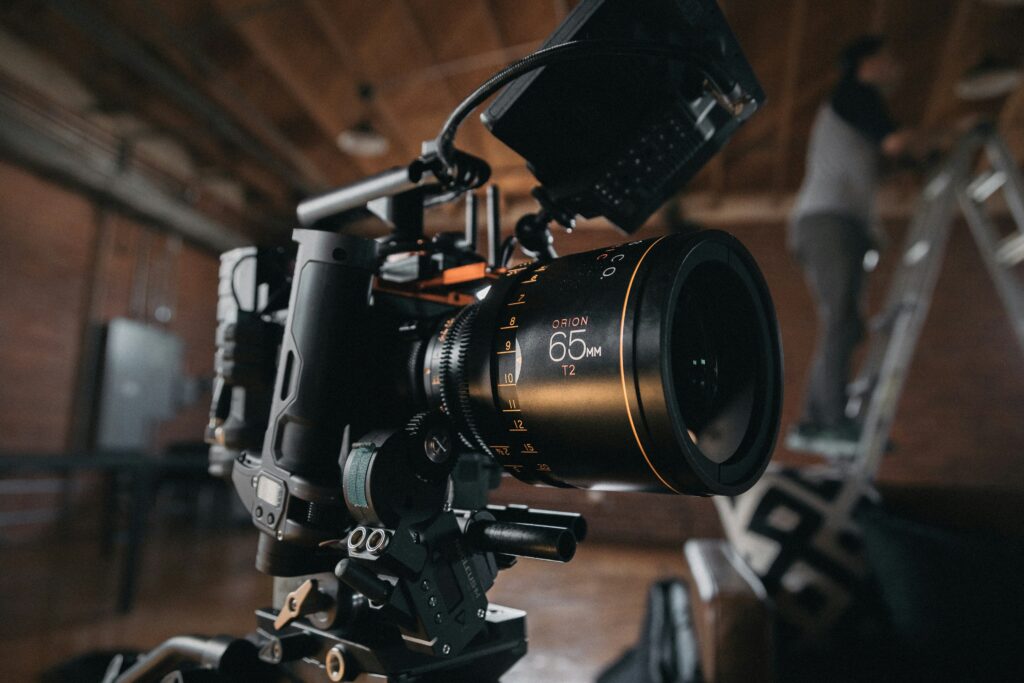
Photo by Jakob Owens on Unsplash
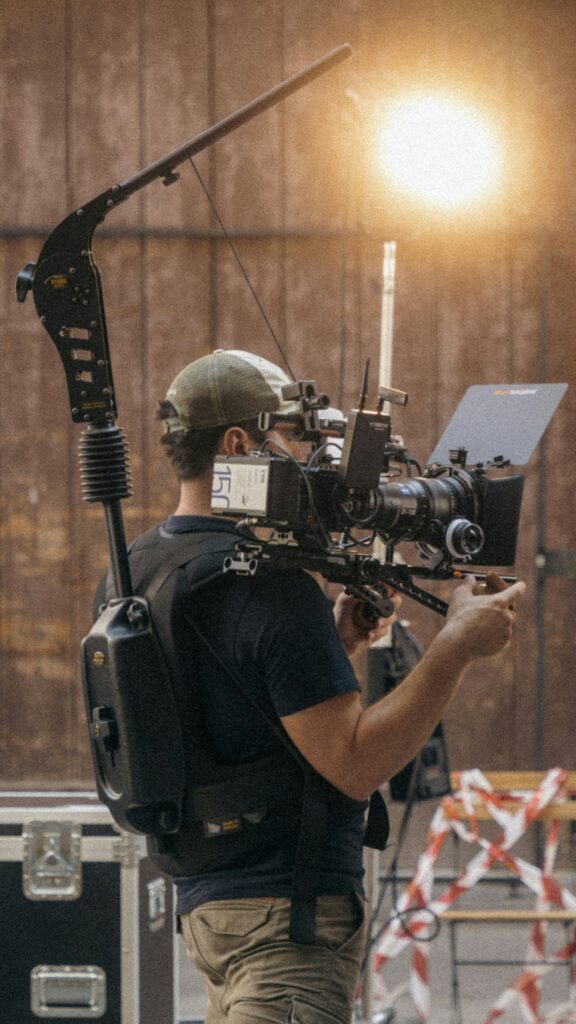
Photo by Michelangelo Ingrosso on Unsplash
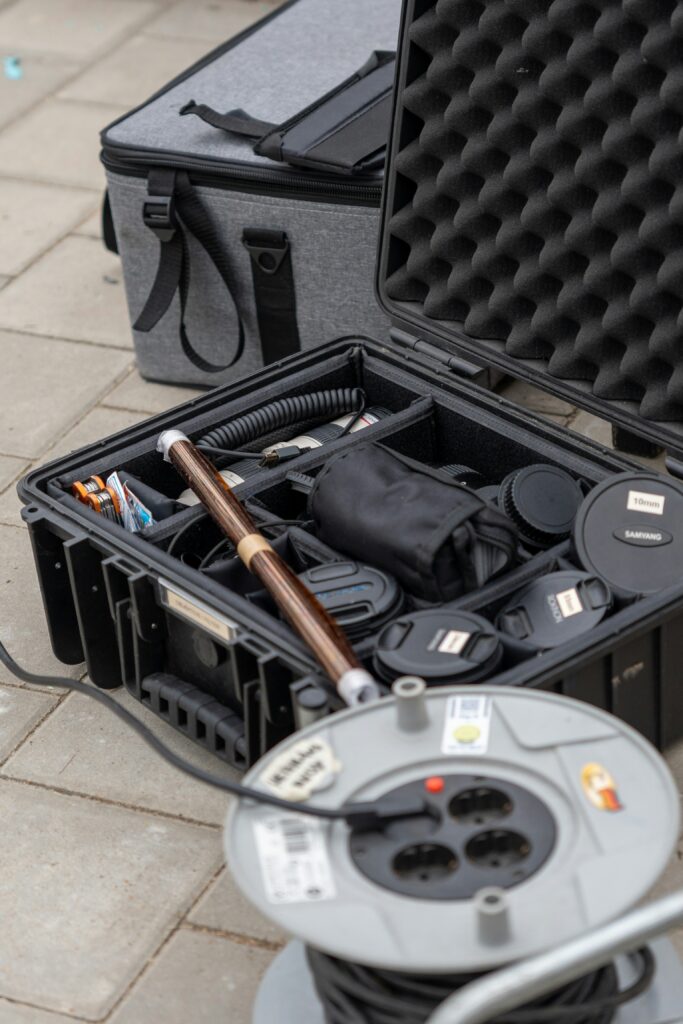
Photo by Max Raber on Unsplash
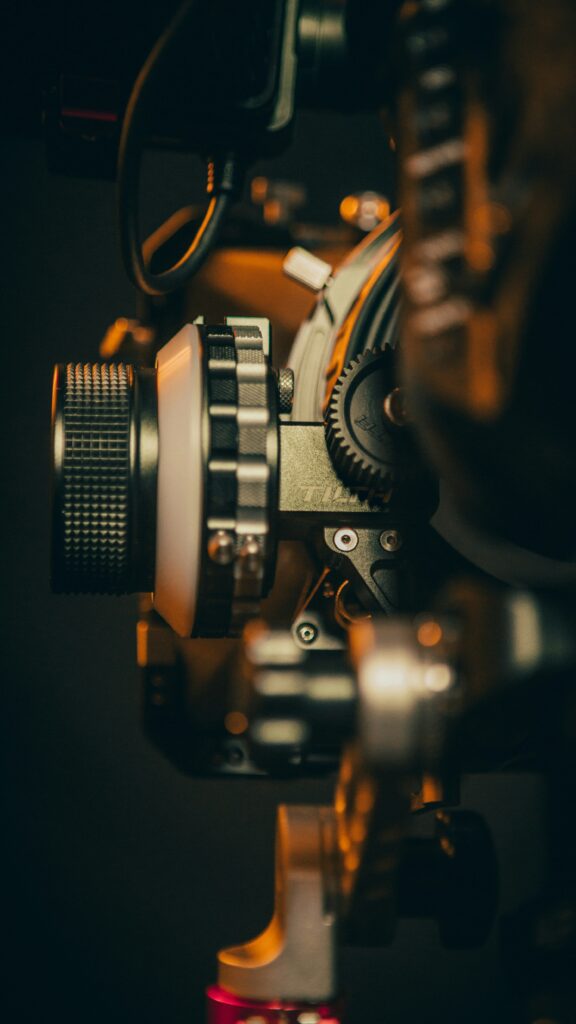
Photo by Billy Freeman on Unsplash
Grip
- Dolly – A wheeled platform for smooth camera movements.
- Dolly Track – Metal rails used for smooth dolly shots.
- C-Stands – Multipurpose stands used to mount lights, flags, and modifiers.
- Sandbags – Weighted bags used to stabilize stands and equipment.
- Apple Boxes – Wooden boxes of various sizes for adjusting height or supporting gear.
- Clamps (Cardellini, Mafer, Gator, etc.) – Used to secure gear to different surfaces.
- Flags (Solids, Silks, Nets) – Used to control and diffuse light.
- Speed Rail – Aluminum tubing used for rigging cameras or accessories.
- Cribbing – Wooden shims used for leveling dolly tracks.
- Grip (Pony) Clips – Spring-loaded clips for securing fabric or cables.
- Suction Cups – Used to attach cameras or rigs to windows and smooth surfaces.
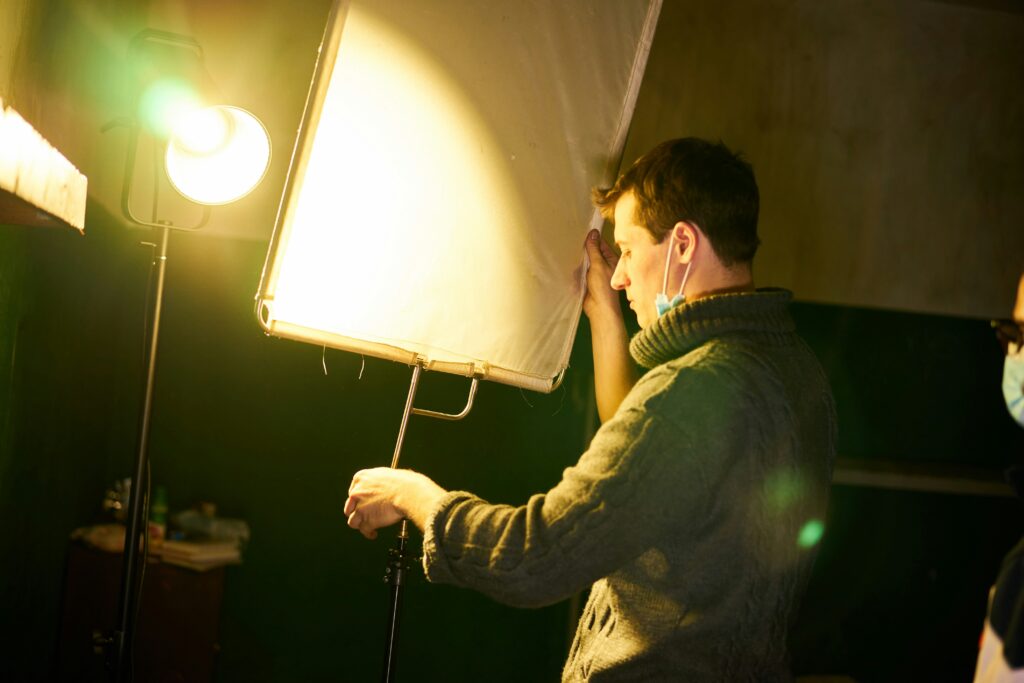
Photo by Valery Tenevoy on Unsplash

Photo by Troy Spoelma on Unsplash

Photo by Troy Spoelma on Unsplash

Photo by Jakob Owens on Unsplash
Lighting
- HMI Lights – High-output daylight-balanced lighting units.
- LED Panels – Energy-efficient, color-adjustable lights (e.g., Aputure, Litepanels).
- Tungsten Fresnels – Hot, continuous lights with adjustable focus.
- Barn Doors – Metal flaps that shape and direct light.
- Gels & Diffusion – Sheets used to color correct or soften light.
- Scrims – Wire mesh filters that reduce light intensity.
- Ballasts – Power supplies that regulate HMI and LED lights.
- Spider Box: A rugged, high-capacity power distribution unit that splits a large input from a generator into multiple outlets for widespread use across a film set.
- Lunchbox: A compact, portable power box that takes a moderate input and provides several 20-amp Edison outlets for localized power needs near the set.
- Joy Cables – heavy-duty, high-voltage electrical cables used to distribute power from the generators to set.
- Stingers – Industry slang for heavy-duty 12-14 gauge extension cords.
- Zip Cord: A lightweight 16-18 gauge cable used for low-power applications, like practical lights or small appliances on set. It’s simple and easy to tape down.
- Dimmer Board – A control station for adjusting light levels.
- Reflectors/Bounce Boards – Surfaces that redirect natural or artificial light.
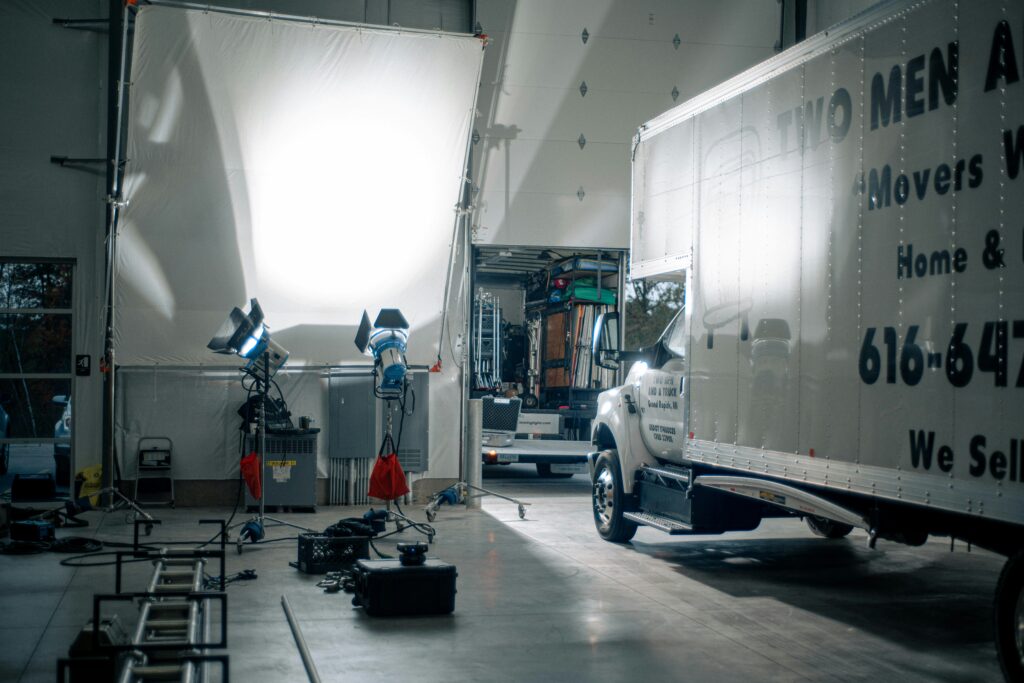
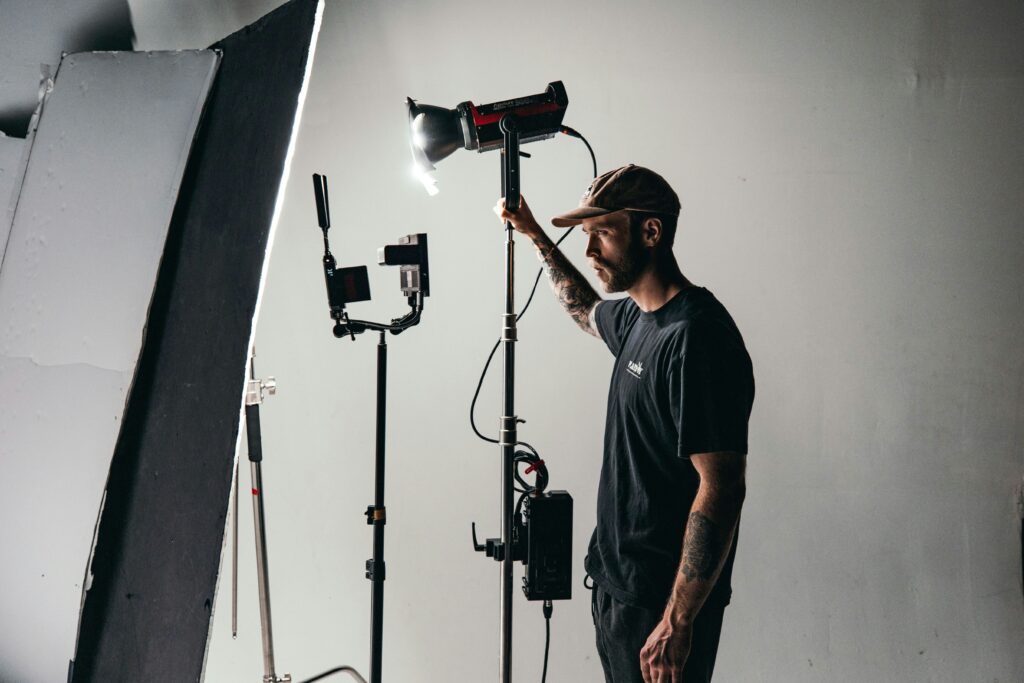
Sound
- Boom Mic & Pole – Directional microphone mounted on a pole for capturing dialogue.
- Lavalier (LAV) Mics – Small, hidden microphones worn by actors.
- Field Recorder – Device that records multiple audio tracks simultaneously.
- Shotgun Mic – A highly directional microphone used for focused sound capture.
- Windshields & Dead Cats – Noise-reducing covers for mics used in windy conditions.
- Wireless Transmitters & Receivers – Used for transmitting lav mic audio to the recorder.
- Timecode Sync Box – Keeps audio and video in perfect sync during recording.
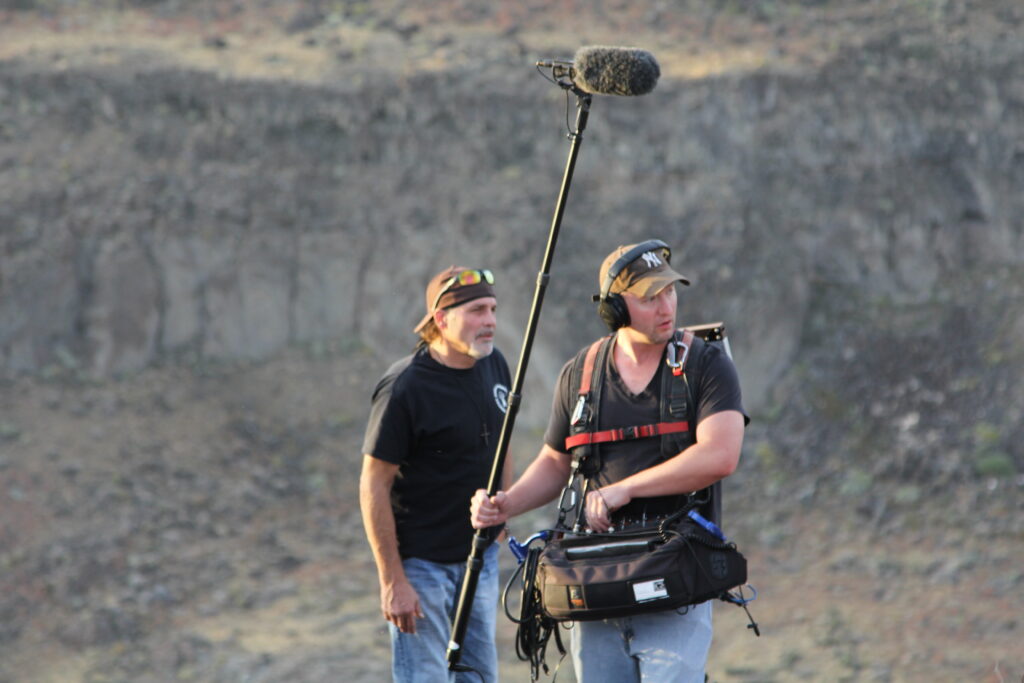

Props
- Hero Props – Important items heavily featured in a scene and usually handled by actors.
- Breakaway Glass & Furniture – Designed to shatter safely for stunts.
- Rubber Weapons – Safe replicas used in action scenes.
- Hand Props – Smaller items actors interact with (phones, books, cups).
- Prop Guns – Non-functional or modified firearms for safety.
- Aging & Distressing Tools – Used to make props look worn or weathered.
- Prop Safe – A secure storage area for valuable or dangerous props.

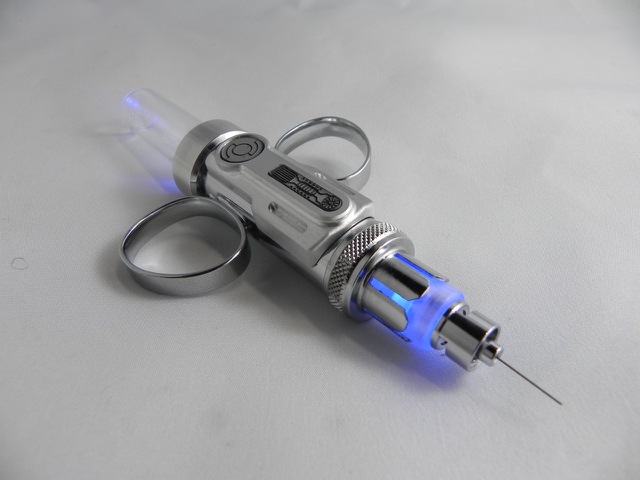
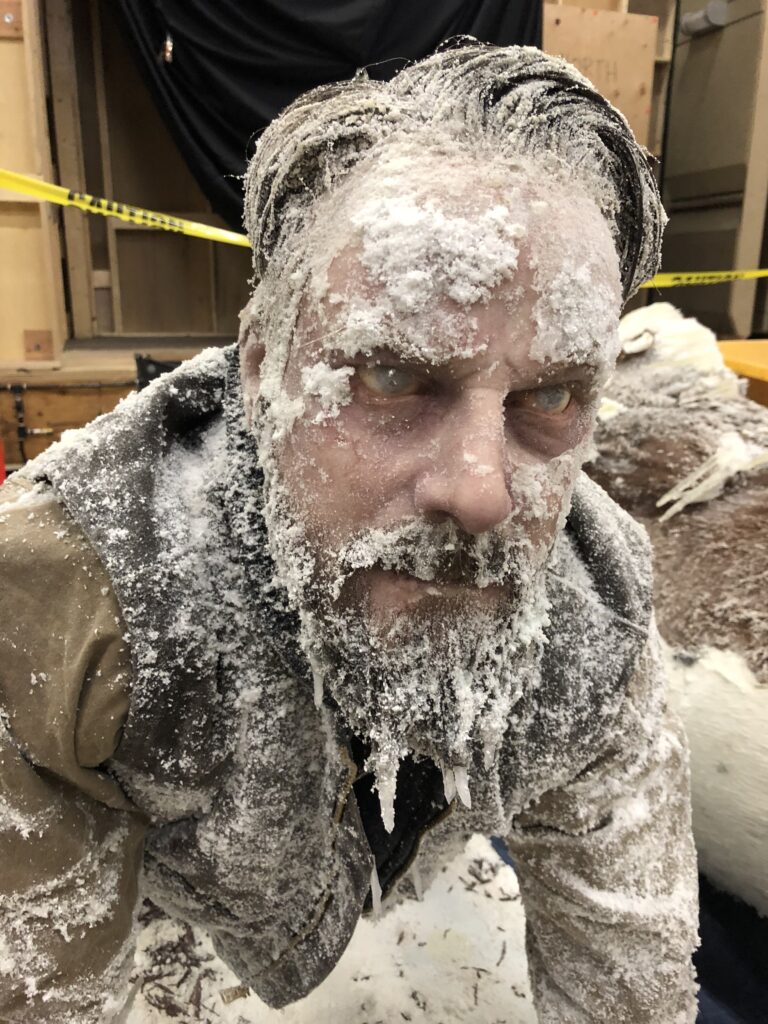
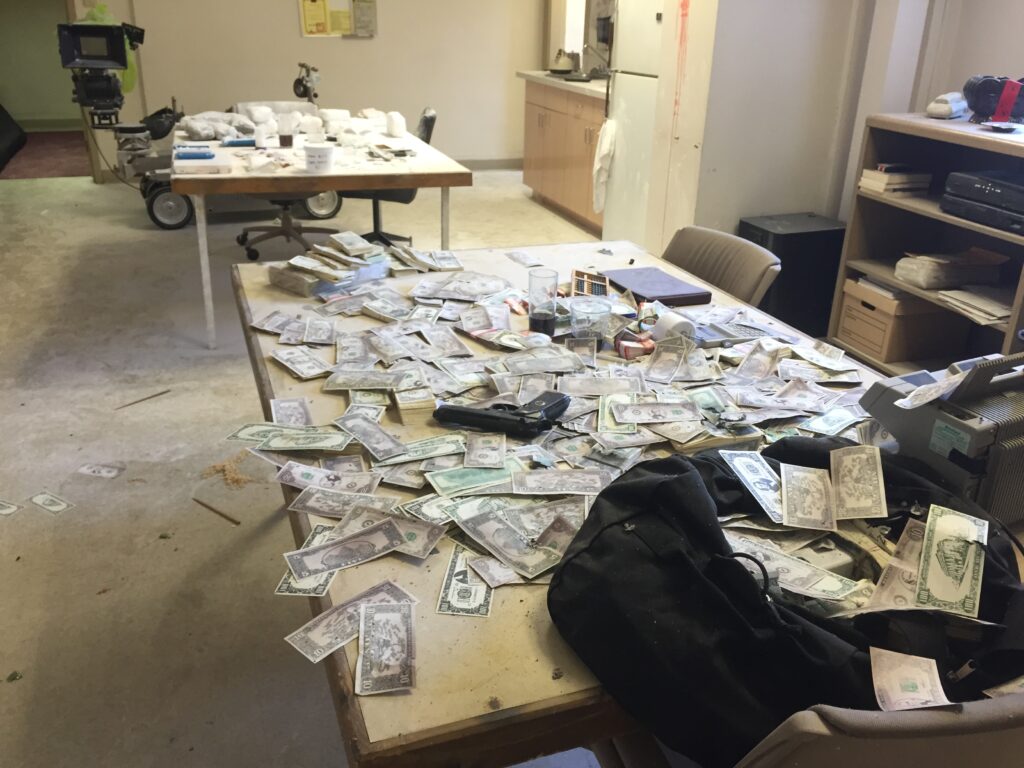
Set Dec
- Dressing Items – Furniture, rugs, curtains, plants, and wall art.
- Hand Props (Secondary) – Items used to enhance the set’s realism.
- Signage & Graphics – Custom-made posters, store signs, and street signs.
- Greenery – Artificial or real plants used to dress sets.
- On-Set Dresser Kit – A toolkit for last-minute adjustments.
Costume/Wardrobe
- Hero Costumes – Outfits worn by lead actors, often custom-made.
- Background Costumes – Clothing for extras and minor characters.
- Aging & Distressing Kit – Tools for making clothes look worn or dirty.
- Sewing Kit – Emergency repair supplies.
- Steamer & Iron – For keeping costumes wrinkle-free.
- Costume Bible – A reference book with continuity photos and notes.
Makeup & Hair
- Airbrush Kit – For special effects and seamless skin tones.
- Wigs & Hairpieces – Custom-made pieces for character transformation.
- SFX Makeup Kit – Includes prosthetics, fake blood, and aging effects.
- Tattoo Cover Makeup – Used to conceal tattoos for period pieces.
- Hair Styling Tools – Curling irons, straighteners, clippers, and dryers.
- Makeup Continuity Binder – A log of actor looks for matching across scenes.
This list touches on the basics, providing a foundation for understanding the gear you’ll encounter. As you start working on sets, you’ll learn more specific names, uses, and variations of equipment, tailored to the needs of each production. Remember, hands-on experience is the best teacher when it comes to film.
For an in-depth look at film departments, positions, gear, and more, explore Lights, Camera, Hired! A Guide to Film Industry Jobs.